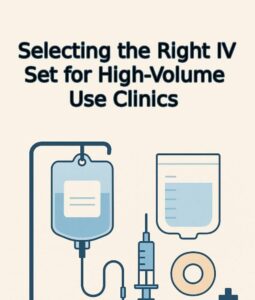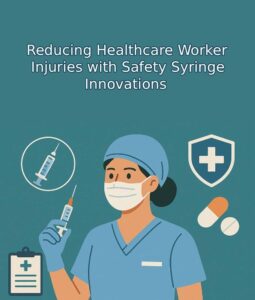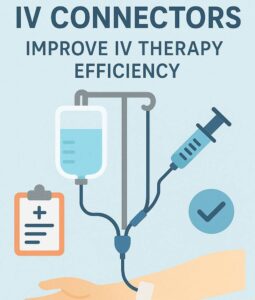Introduction: The Growing Importance of IP in OEM Medical Manufacturing
In the competitive and highly regulated medical device industry, safeguarding intellectual property is no longer optional—it’s critical. Whether you’re licensing a new technology, outsourcing production to an OEM factory, or filing a patent on a novel device design, understanding OEM IP protection, navigating medical product patents, and securing ironclad contract IP terms can prevent costly disputes and safeguard your innovation.
From proprietary catheter designs to patented insulin delivery systems, the global expansion of OEM partnerships has introduced both opportunities and vulnerabilities when it comes to IP management. Know more..
Understanding OEM IP Protection
What Does OEM IP Protection Cover?
OEM IP protection includes securing ownership and control over all forms of intellectual property (IP) shared with or created by the OEM partner during product development and manufacturing. This may include:
- Product designs and blueprints
- Software algorithms (e.g., for smart devices)
- Branding, logos, and packaging materials
- Production methods and formulations
- Tooling or mold designs
The goal is to prevent unauthorized use, duplication, or distribution—especially by third parties.
Common IP Risks in Cross-Border Manufacturing
- Reverse engineering and unauthorized production
- IP leakage to competitors through employee turnover or supplier misuse
- Inadequate legal protections in OEM’s home country
- Shared tooling used to produce knock-off products
Having a clear, enforceable agreement is the first step toward reducing these risks.
Medical Product Patents: What You Need to Know
Types of Patents in the Medical Industry
When it comes to medical product patents, there are three main types:
- Utility patents – for functional aspects of devices (e.g., syringe mechanism)
- Design patents – for ornamental appearance (e.g., shape of a lancet)
- Process patents – for proprietary manufacturing or treatment methods
Each provides different levels of protection and can be filed separately or in combination.
Patent Filing Strategies for OEM Partnerships
- File early before disclosing designs to OEMs
- Use non-publication options to maintain secrecy until products reach market
- Choose strategic jurisdictions (e.g., US, EU, China, India) based on your target markets
- Include IP assignment clauses to secure patents created during development
Contract IP Terms in OEM Agreements
Key Clauses to Include in IP Agreements
A solid OEM contract should clearly address:
- Ownership of pre-existing IP
- Assignment of newly developed IP
- Non-compete and non-use clauses
- Penalties for infringement or unauthorized disclosure
Ownership vs. Licensing in Contract Language
Decide whether:
- The OEM is granted a license to use your IP only for manufacturing purposes
- All new IP created during production belongs solely to you
- Shared IP (jointly developed) must be licensed back to each party under defined terms
Use precise legal language to avoid interpretation conflicts later.
Common IP Disputes in Medical OEM Relationships
Real-World Examples and Outcomes
- A U.S. medical startup lost control of its patented IV catheter when a Chinese OEM used the same tooling to supply competitors.
- A European lab shared a new wound dressing formula with its OEM, only to find it mass-produced under a different label six months later.
How to Mitigate Risk Before Litigation
- Register IP in jurisdictions where your OEM operates
- Use confidentiality agreements (NDAs)
- Limit access to sensitive files
- Consider escrow arrangements for software or design files
IP Challenges in International Manufacturing
Jurisdiction Issues and Enforcement Barriers
If you file your patent in the U.S. but outsource manufacturing to Asia or Eastern Europe, enforcement becomes complex. Local IP laws and court systems vary dramatically.
For better protection:
- Register IP in the OEM’s country
- Translate contracts and patents into local language
- Use arbitration clauses with neutral locations (e.g., Singapore, Hong Kong)
Working with Overseas OEM Factories
Before signing:
- Verify factory ownership and IP reputation
- Audit for signs of prior IP violations
- Avoid vendors offering your designs to competitors at discounted rates
How to Register and Protect Medical Product Patents Globally
PCT, USPTO, EPO, and CNIPA Explained
| Region | Authority | Best Use |
| Global | PCT (WIPO) | File once, extend to 150+ countries |
| USA | USPTO | Most robust enforcement options |
| Europe | EPO | Protects in 39 European nations |
| China | CNIPA | Essential for OEM-heavy regions |
Patent Maintenance and Renewals
- Patents require annual maintenance fees
- Track jurisdiction-specific deadlines
- Set up alerts for renewal dates to avoid lapses
Digital Assets and Trade Secrets in OEM Manufacturing
Protecting CAD Files, Formulations, and SOPs
Digital assets can be even more valuable than physical devices. Protect:
- CAD files
- Formulation spreadsheets
- Test protocols and quality control SOPs
Use:
- Password-protected access
- Version control
- Access logs and NDAs for every user
Best Practices for Data Access and NDAs
- Only share “need-to-know” files
- Update NDAs to reflect changing IP value
- Implement data expiration policies
Working with OEMs: Vetting and Due Diligence
Supplier IP Audit Checklist
Before signing, ask:
- Have they been involved in any IP disputes?
- Who owns the molds or tooling?
- Do they use subcontractors, and are they bound by NDAs?
- What data security measures are in place?
Red Flags to Watch in Supplier Contracts
- No clear IP clauses
- Vague references to shared ownership
- Refusal to sign exclusivity or NDA
- eusing tooling for other clients
Role of NDAs and Confidentiality Agreements
NDA Templates for Medical Projects
A well-drafted NDA should include:
- Duration (2–5 years post-project)
- Definition of “confidential information”
- Scope of use (manufacturing only)
- Return or destruction of data upon termination
Enforceability by Jurisdiction
NDAs are easier to enforce in:
- U.S.
- UK
- Singapore
- Germany
In countries with weak IP laws, include international arbitration or choose governing law carefully.
IP Transfer and Exit Strategies
Technology Transfer Protocols
When switching suppliers:
- Secure ownership of tooling
- Transfer or license software and documentation
- Use escrow agents to manage sensitive IP during transition
IP Clauses in OEM Termination Scenarios
Termination clauses should state:
- All IP reverts to the original owner
- Tools must be returned or destroyed
- NDA obligations continue post-contract
Building Long-Term OEM IP Partnerships
Collaborative Development Models
Some OEMs are also innovators. Joint development models can work if:
- IP co-ownership is clearly defined
- Contributions are tracked and documented
- Royalties or licensing splits are pre-agreed
IP Co-Ownership Agreements Explained
For co-developed products:
- Clarify who can commercialize the IP
- Decide whether either party can license it to third parties
- Use legal mechanisms like Joint IP Registers
FAQs: OEM IP Protection, Patents & Contracts
1. What’s the biggest IP risk in OEM partnerships?
Uncontrolled sharing or duplication of your designs by overseas manufacturers.
2. Should I patent my design before sharing it with an OEM?
Yes. File first, then share under NDA and signed contract terms.
3. Can I co-own IP with my OEM partner?
Yes, but ensure a written co-ownership agreement outlining rights and commercialization terms.
4. Are NDAs legally binding across borders?
They can be—if they include proper governing law and arbitration clauses.
5. Who owns IP developed during the OEM project?
This depends on your contract IP terms. Define ownership clearly in writing.
6. What’s the safest way to send CAD files to an OEM?
Use encrypted file-sharing tools with password protection, expiry links, and limited user access.
Conclusion
Managing intellectual property in OEM medical manufacturing requires a blend of legal foresight, strategic planning, and supplier discipline. By focusing on OEM IP protection, securing your medical product patents, and crafting bulletproof contract IP terms, you can confidently innovate without fear of infringement or misuse.
Start by choosing the right OEM partner, register your patents strategically, and don’t underestimate the power of a well-written NDA. In the end, protecting your IP is not just a legal obligation—it’s a business advantage.






